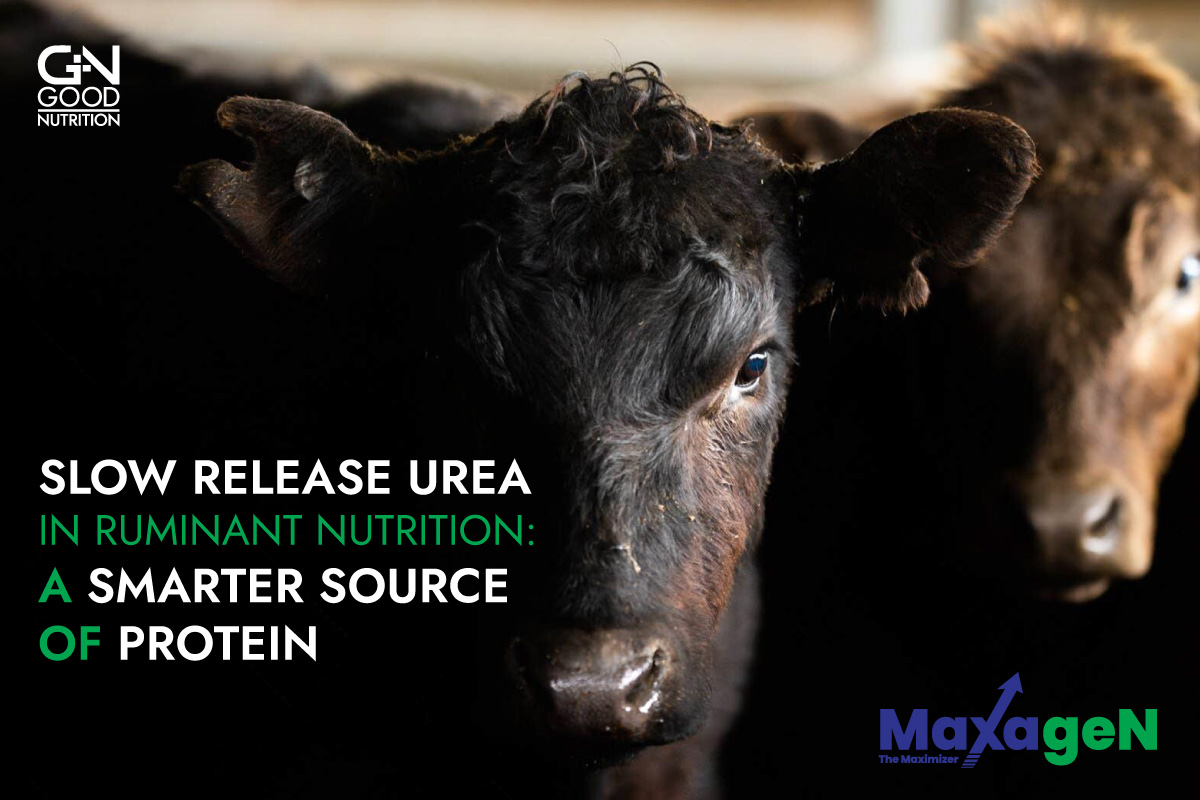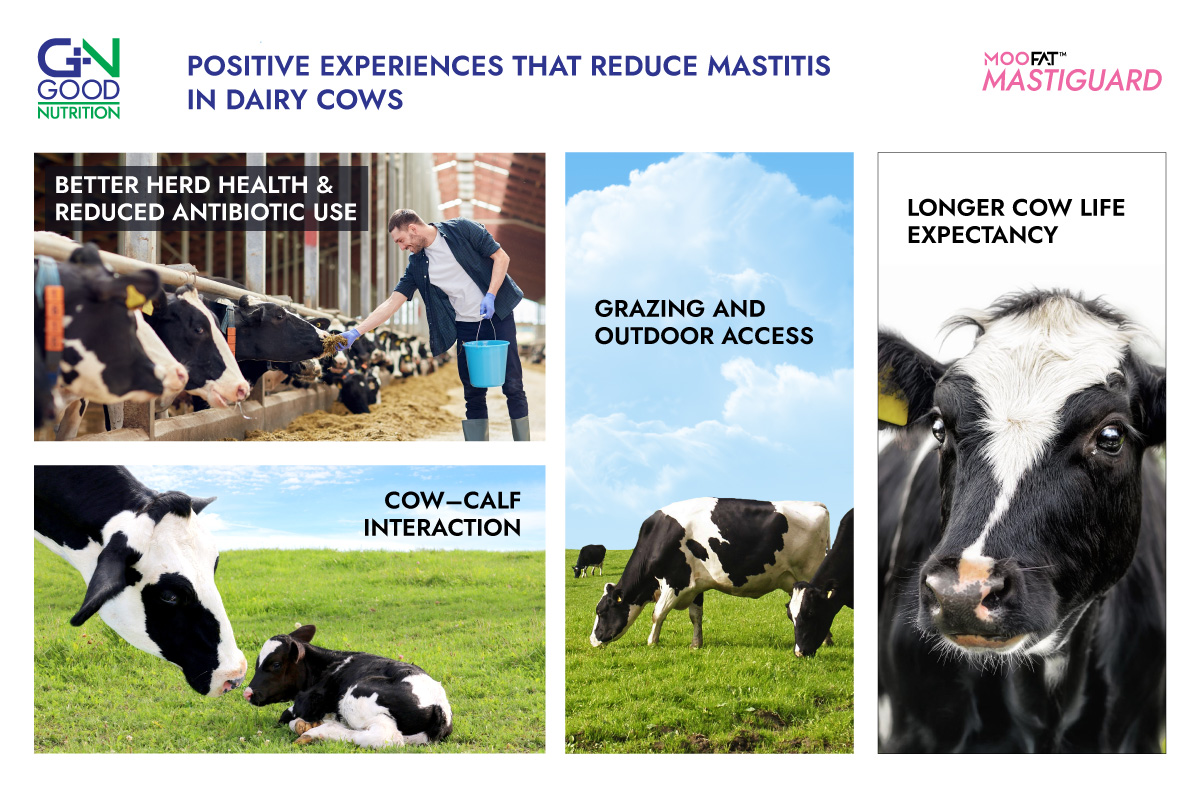Feeding livestock is both an art and a science. Farmers and nutritionists are constantly seeking ways to get the most out of feed, improve animal health, and reduce costs. One innovation that has gained attention in recent years is slow release urea (SRU)—a specially designed form of non-protein nitrogen that helps ruminants such as cattle, sheep, and goats digest feed more efficiently.
This article explains what SRU is, how it works, and why it’s becoming important in modern ruminant diets.
What is Urea and Why is it Used in Ruminants?
Ruminants are unique animals because their stomachs host billions of microbes that can turn non-protein nitrogen (NPN) into high-quality microbial protein. Microbial protein is the best form of protein for ruminants because the amino acid profile matches the animal’s requirements whereas other protein sources are generally low in some amino acids eg methionine. Urea is the most common NPN source used in feed.
- Regular urea provides a quick nitrogen supply to rumen microbes, but it breaks down too fast, releasing ammonia that can overwhelm the animal’s system if not balanced with enough energy (from starches and sugars).
- If rumen microbes can’t capture this nitrogen quickly, it is lost as waste—or worse, it can cause toxicity.
This is where slow release urea comes in.
What is Slow Release Urea (SRU)?
Slow release urea is urea that has been specially coated or chemically modified to release nitrogen gradually inside the rumen.
- Instead of a sudden spike of ammonia, nitrogen is made available over 8–12 hours (depending on the product).
- This matches better with the animal’s normal feeding and digestion pattern, giving microbes a steady supply of nitrogen.
Think of it like a “time-release capsule” for livestock designed to feed the rumen microbes steadily, rather than dumping all the nutrients at once.
Benefits of Using SRU
1. Improved Feed Efficiency
Research shows that SRU improves how well cattle convert feed into milk or meat.
- A meta-analysis of trials in dairy cows has shown increases in milk yield and a 3% improvement in feed efficiency.
- Beef cattle trials reported 8% better average daily gains and 8% improvement in feed efficiency when SRU replaced part of the protein in the diet.
2. Reduced Risk of Toxicity
Because SRU doesn’t flood the rumen with nitrogen at once, the risk of ammonia poisoning is much lower. This makes it safer for farmers to use compared to raw urea.
3. Cost Savings
Protein ingredients like soybean meal and canola meal are expensive.
- SRU allows partial replacement of these costly ingredients.
- For every 1 kg of SRU, cattle can receive the equivalent protein value of 5–6 kg of soybean meal, depending on diet balance (256% CP vs 44-48% CP).
4. Ration flexibility
SRU creates space in the diet that can be used to include more forage for a rumen friendly diet or a more concentrated diet for higher energy where DMI is not enough to maximise milk yields.
5. Environmental Benefits
Nitrogen that isn’t used by the cow is excreted into the environment, often as urea in urine.
- SRU improves nitrogen capture by microbes, which reduces nitrogen waste by up to 20% in some trials.
- This supports more sustainable farming by lowering pollution risks.
How SRU Works in Practice
Imagine feeding a dairy cow a typical ration: silage/forage, grains, and protein meals. If you add regular urea, nitrogen is available in minutes—but starches from grains and forages may take longer to break down. This mismatch means microbes can’t use the nitrogen efficiently.
SRU fixes this by slowing the release so that nitrogen is available when the energy is available. Microbes grow better, produce more microbial protein, and in turn, the cow gets more amino acids for milk and muscle.
Things Farmers Should Know
- Not a Total Replacement
- SRU is not meant to replace all protein sources. It works best when partially replacing soybean meal, cottonseed meal, or other protein ingredients.
- SRU is not meant to replace all protein sources. It works best when partially replacing soybean meal, cottonseed meal, or other protein ingredients.
- Balanced Diet Still Needed
- Energy sources (like maize, barley, forage or molasses) must be present so microbes can use the nitrogen effectively.
- Energy sources (like maize, barley, forage or molasses) must be present so microbes can use the nitrogen effectively.
- Feeding Rates
- Recommended inclusion is usually 50–150 grams per head per day for dairy cows, depending on diet formulation. Trial work and commercial experience has also used higher rates e.g. 250g for high producing dairy cows. For beef cattle the range is normally 50-100 g per head per day. Caution must be taken if other NPN sources are present and dose rates adjusted.
- Overfeeding—even with SRU—can still cause imbalances.
- Recommended inclusion is usually 50–150 grams per head per day for dairy cows, depending on diet formulation. Trial work and commercial experience has also used higher rates e.g. 250g for high producing dairy cows. For beef cattle the range is normally 50-100 g per head per day. Caution must be taken if other NPN sources are present and dose rates adjusted.
- Product Quality Matters
- Not all SRUs are the same. Coating technology, particle size, and release rates vary. Farmers should use products backed by research and field data.
- Not all SRUs are the same. Coating technology, particle size, and release rates vary. Farmers should use products that have a release rate matching their diet and usage conditions.
- Not all SRUs are the same. Coating technology, particle size, and release rates vary. Farmers should use products backed by research and field data.
The Bigger Picture
Feeding ruminants has always been about balance—matching what microbes need with what the cow needs. SRU is a tool that helps farmers:
- Produce more milk and meat with fewer inputs.
- Lower costs without sacrificing quality.
- Reduce the farm’s environmental footprint.
For farmers looking to combine traditional animal husbandry with modern nutrition science, slow release urea represents a bridge between efficiency and sustainability.
Conclusion
Slow release urea is more than just another feed additive—it’s a smarter way to provide protein to ruminants. By releasing nitrogen gradually, it improves microbial growth, enhances productivity, and reduces waste.
In a world where feed costs are rising and sustainability matters more than ever, SRU is proving to be a valuable innovation that helps farmers feed their animals—and the world—more efficiently.





